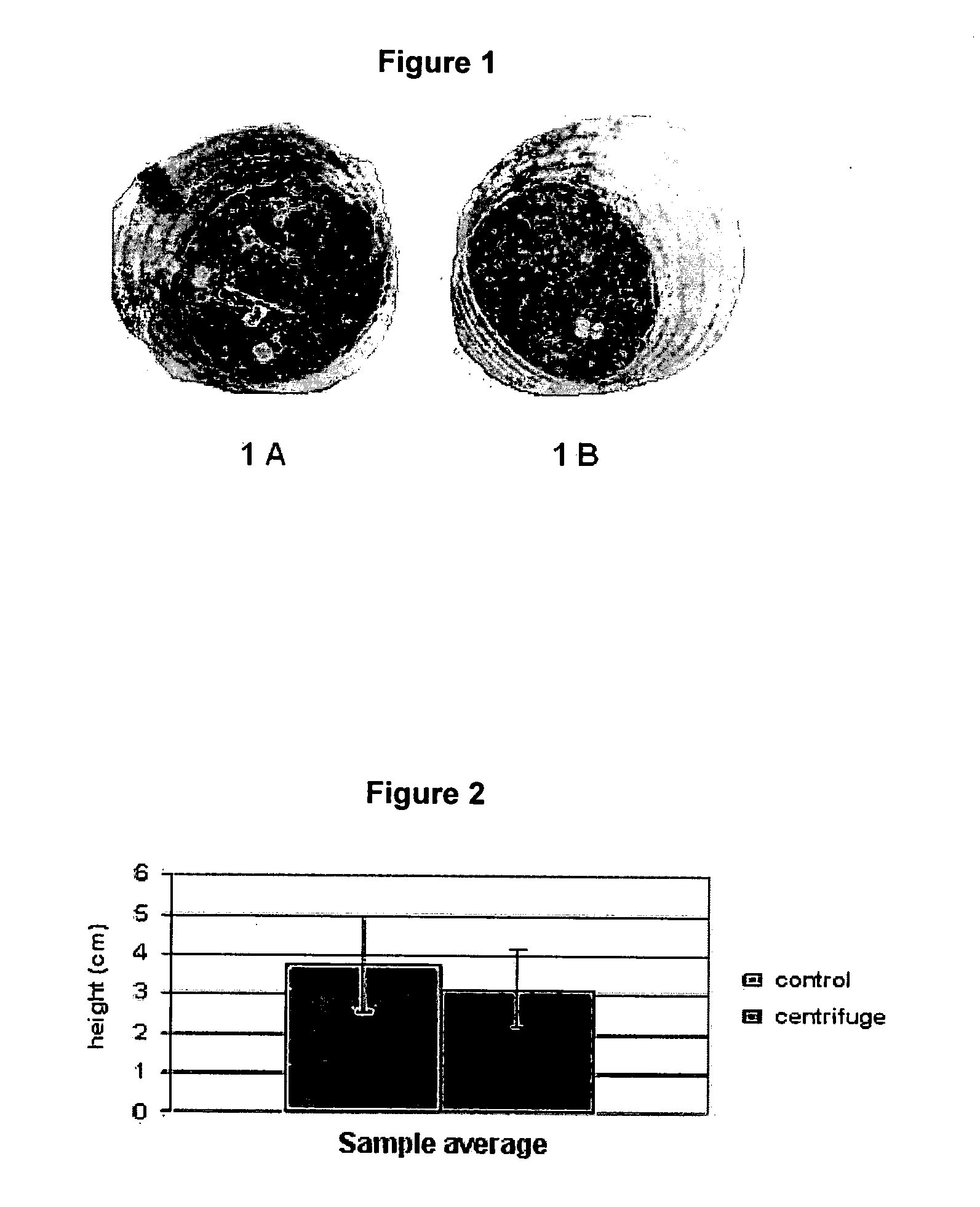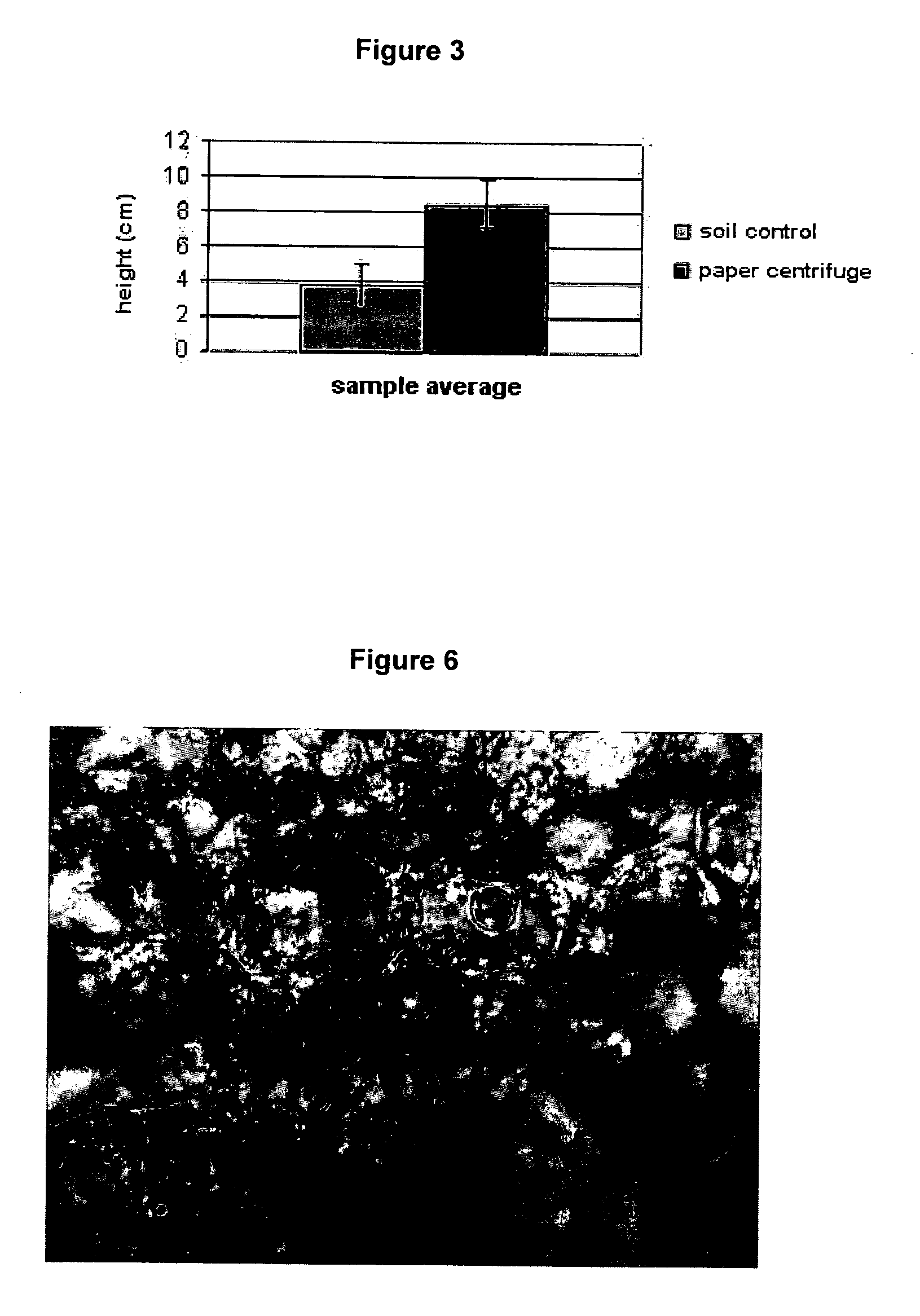Process of growing plants under hypergravity conditions
a hypergravity and plant technology, applied in the field of simulated hypergravitylike or simulated hypergravity conditions in plant development modulation, can solve problems such as interference in living organism development, and achieve the effects of accelerating cell growth and cell differentiation, and increasing growth
- Summary
- Abstract
- Description
- Claims
- Application Information
AI Technical Summary
Benefits of technology
Problems solved by technology
Method used
Image
Examples
example 1
[0027]A plastic pot with a diameter of 60 mm and height of 62 mm, with 44 g of dark soil (Mumosoto, a kind of humus) and 10 seeds of Euruca sativa Mill, (KAD type, with increased moisture) was put in each arm end of a centrifuge, adjusted to rotate at 92 rpm, in order to provide a +7Gz environment. Seeds mentioned above were subjected to this condition during intermittent periods—in this case from 8 AM to 5 PM, totaling 9 h / day for four consecutive days. At night, hypergravity action was removed, that is, from 5 PM to 8 AM next day plants remained under Earth's gravity force (1G). Pots were closed with a plastic coverage to avoid water evaporation by forced convection resulting from the spinning. Pots were safely fixed to the arm ends of the centrifuge with a metal bolt. Thus, during rest the pot opening remained at a 90° angle to the centrifuge arm. During centrifuge rotation, the pot remained at 0° angle to the centrifuge arm, simulating an increase of Earth's gravitational force ...
example 2
[0032]From the results obtained in Example 1, new experiments were carried out. In the present example, only soil method was employed, despite the variances obtained from the water factor. At the end of this experiment, however, it was visually noticed that the soil of the samples in the centrifuge was dry on the surface, possibly negatively influencing plant growth. Difficulty in establishing the exact amount of water that should be used to have the same moisture under 1 Gz as well as under +7Gz was evident. FIG. 2 shows that control sample growth (3.76±1.21) was statistically greater (p=0.00) than centrifuge sample growth (3.15±1.00). However, when comparing growths in paper with water-centrifuge of Example 1 experiments (8.44±1.43) to soil-control (3.76±1.21), a significant difference (p=0.00) was noticed, as showen in FIG. 3. Therefore, the last experiment aimed only at the application of paper with water method in order that the water factor did not interfere in results.
[0033]I...
PUM
 Login to View More
Login to View More Abstract
Description
Claims
Application Information
 Login to View More
Login to View More - R&D
- Intellectual Property
- Life Sciences
- Materials
- Tech Scout
- Unparalleled Data Quality
- Higher Quality Content
- 60% Fewer Hallucinations
Browse by: Latest US Patents, China's latest patents, Technical Efficacy Thesaurus, Application Domain, Technology Topic, Popular Technical Reports.
© 2025 PatSnap. All rights reserved.Legal|Privacy policy|Modern Slavery Act Transparency Statement|Sitemap|About US| Contact US: help@patsnap.com



